What Does GOP Stand For? Here's Why Republicans Adopted the Nickname
The Republican Party has used the GOP nickname since the 1870s
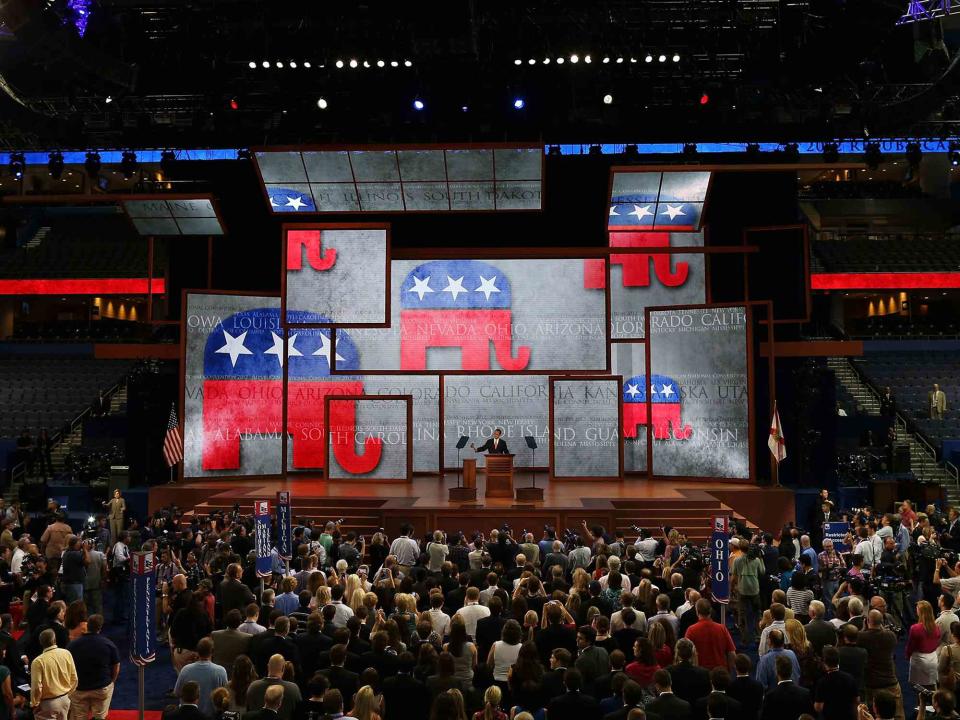
Mark Wilson/Getty
The 2012 Republican National Convention in Tampa, FloridaThe origins of the Republican Party date all the way back to the 19th century. While the political landscape and the party’s dominant ideology have changed a great deal since then, its nickname has remained the same.
In the years after its founding in 1854, the Republican Party became known as the Grand Old Party or GOP for short. At the time, the name paid tribute to the political party's values. Party leaders hoped the name would remind constituents that the Republicans had aimed to keep the Union together amid the Civil War.
“The moniker was intended to frame Republicans as America’s true partisan patriots,” Republican Party historian Tim Galsworthy told The Washington Post in 2022.
Related: Republicans Officially Take Back the House After 4 Years with Democratic Majority
Even now, more than 150 years later, the GOP nickname is still used interchangeably with the Republican Party. It is used in media coverage and political speeches — and it’s even the domain name for Republicans’ official website.
So what is the GOP? Here's everything to know about the nickname for the Republican Party.
What does the abbreviation GOP stand for?

Joe Raedle/Getty
Ben Carson, Marco Rubio, Donald Trump,Ted Cruz and John Kasich stand on stage for the Republican National Committee Presidential Primary Debate in 2016GOP stands for the Grand Old Party.
Who is a part of the GOP?

The GOP consists of members of the Republican Party, including its politicians and public supporters.
When was the GOP formed?
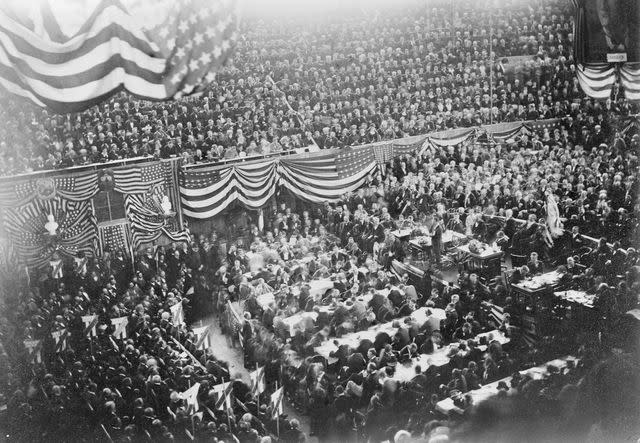
Bettman
Republican Convention in 1880The origins of the GOP date back to the mid-19th century when former members of several existing political parties, including the Whig and Free Soil parties, united in opposition of slavery. At the time, the anti-slavery group was attempting to prevent the expansion of slavery into new territories, as was proposed in the Kansas-Nebraska Act.
During the summer of 1854, the group held its first convention, established a platform and nominated candidates, officially creating the Republican Party. The name partially paid homage to Thomas Jefferson’s defunct Democratic-Republican Party. In 1861, the first Republican president, Abraham Lincoln, took office.
Although the party was founded more than 150 years ago, the original group laid the foundation for the modern Republican Party and has become one of the two major parties in American politics.
Related: Only 5 Former U.S. Presidents Are Still Alive — Including the Oldest, Jimmy Carter
Why is the Republican Party known as the GOP?
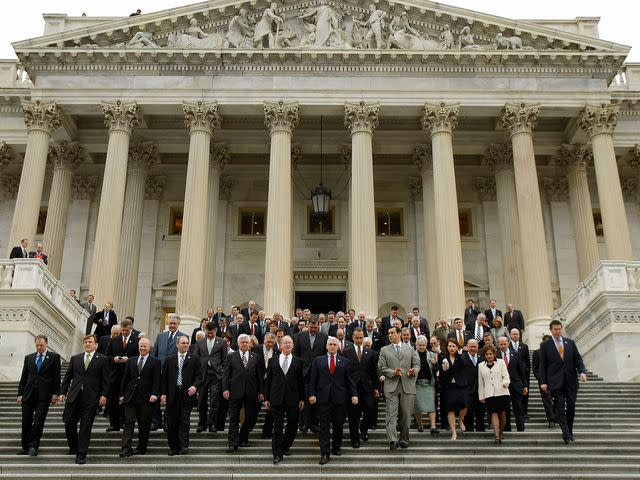
Chip Somodevilla/Getty
Republicans from the House and Senate walk down the East Front steps outside the House of Representatives for news conference at the U.S. Capitol in 2009When Republicans adopted the GOP nickname, it had already been in use by their Democratic rivals for several years. As early as the 1850s, Democrats had used the term to describe their own party’s long tenure and its steadfast principles. In 1859, Kentucky Gov. Beriah Magoffin even referred to the Democrats as the “grand old party” in his inaugural address.
But by the 1870s, the Republican party had also begun to use the nickname, calling themselves first the “Gallant Old Party” and then shifting to the “Grand Old Party.” The term quickly gained widespread usage and was eventually picked up by the media and political supporters.
When was the term GOP first used?
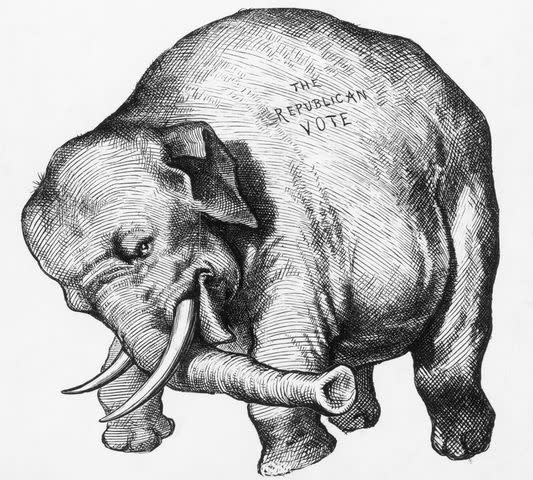
Bettman
Thomas Nast's political cartoon published in Harper's Weekly in 1874Despite being a relatively new political party, Republicans adopted their Grand Old Party nickname in the 1870s, less than two decades after its formation. While the nickname gained traction around that time, widespread utilization of the GOP acronym didn’t come for at least another 10 years.
According to Safire’s Political Dictionary, the first use of the GOP abbreviation in print was in 1884 when the New York Tribune ran the headline “ ‘The G.O.P. Doomed,’ shouted the Boston Post.” (The Boston Post article has yet to be found.) Although that is the earliest recorded usage, Cincinnati Gazette printer T. B. Dowden gained notoriety for coining the abbreviation.
In 1931, Dowden told TIME magazine that he had been printing a story about Republican presidential nominee James G. Blaine and had limited space left for the headline. With his deadline quickly approaching, the paper’s foreman told Dowden to “cut 'em short, get 'em in, abbreviate 'em, use initials” to make the headline fit. The next day, the front page of the paper referred to the Grand Old Party as “the GOP.”
Why are Republicans and Democrats represented by elephants and donkeys?
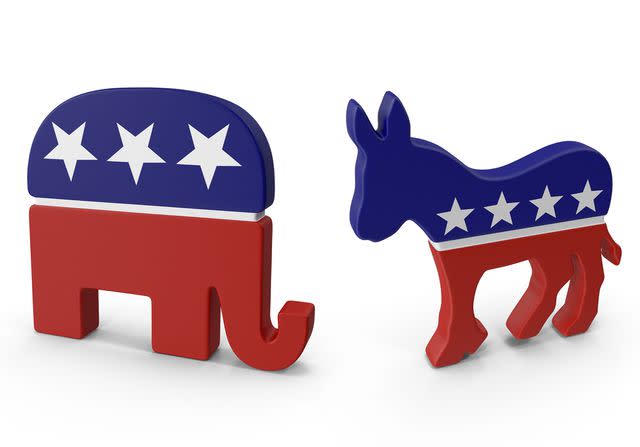
Getty
The elephant that represents Republicans and the donkey that represents DemocratsAround the same time that Republicans adopted the GOP nickname, they gained a mascot in the form of an elephant. In 1874, political cartoonist Thomas Nast published a piece in Harper’s Weekly depicting Democrats as a donkey attempting to frighten a Republican elephant. Although there had been earlier symbolic representations of Republicans as an elephant, this cartoon brought it to prominence.
Subsequently, other artists picked up the depiction of the two political parties as animals. By the 1880 presidential election, elephants and donkeys were frequently used as the parties’ symbols in other publications.
For more People news, make sure to sign up for our newsletter!
Read the original article on People.

